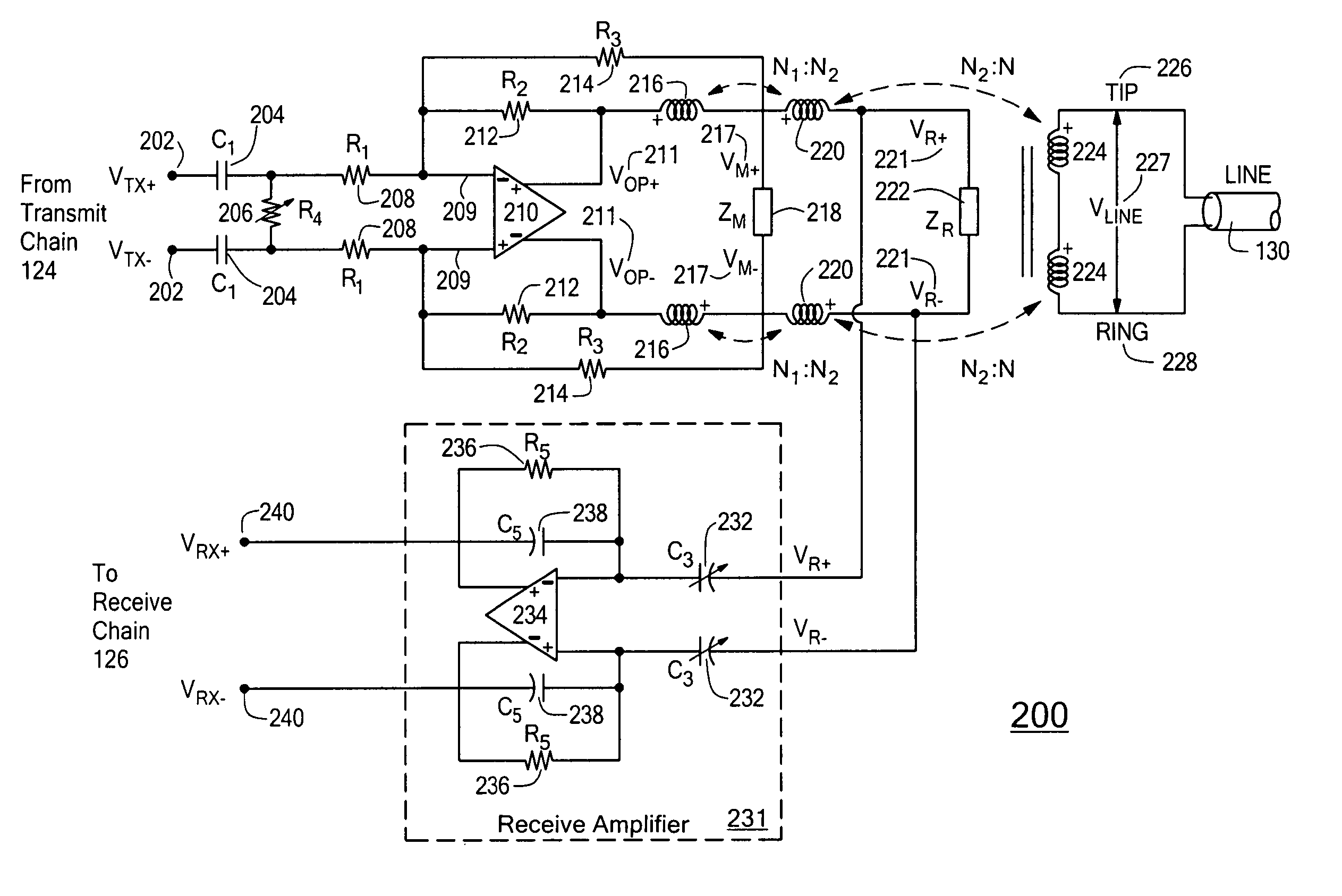Line interface with analog echo cancellation
a line interface and analog echo technology, applied in the field of communication systems, can solve the problems of significant space saving on the printed circuit board, limit the dynamic range, etc., and achieve the effects of reducing cost, avoiding overlapping, and reducing common-mode nois
- Summary
- Abstract
- Description
- Claims
- Application Information
AI Technical Summary
Benefits of technology
Problems solved by technology
Method used
Image
Examples
first embodiment
[0038]FIG. 2 is a schematic diagram showing an exemplary line interface architecture 200 for an ADSL modem front end in accordance with the present invention. The line interface 200 uses a fully-differential voltage-feedback implementation of a line driver, a single-transformer hybrid, a single matching impedance, and a receive path amplifier. The transformer uses split windings on both the primary side (i.e., the side coupled to the transmitter 124 and the receiver 126) and the secondary side (i.e., the side coupled to the line 130). On the primary side of the transformer, each half of the primary side is tapped to obtain a turns ratio of N1:N2, while each half of the secondary side of the transformer has N windings. A dual negative-feedback network (described below) boosts the small-signal impedance of the matching network 218 (ZM) to a much larger line driver output impedance in order to match the characteristic impedance of the transmission line (ZL). Matched termination of the ...
second embodiment
[0060]FIG. 4 is a schematic diagram showing an exemplary line interface architecture 400 for an ADSL modem front end in accordance with the present invention. The line interface 400 uses a fully-differential voltage-feedback implementation of a line driver, a single-transformer hybrid, a single matching impedance, and a receive path amplifier. The transformer uses split windings on both the primary side (i.e., the side coupled to the transmitter 124 and the receiver 126) and the secondary side (i.e., the side coupled to the line 130). On the primary side of the transformer, each half of the primary side is tapped to obtain a turns ratio of N1:N2, while each half of the secondary side of the transformer has N windings. A dual negative-feedback network (described below) boosts the small-signal impedance of the matching network 418 (ZM) to a much larger line driver output impedance in order to match the characteristic impedance of the transmission line (ZL). Matched termination of the ...
PUM
 Login to View More
Login to View More Abstract
Description
Claims
Application Information
 Login to View More
Login to View More - R&D
- Intellectual Property
- Life Sciences
- Materials
- Tech Scout
- Unparalleled Data Quality
- Higher Quality Content
- 60% Fewer Hallucinations
Browse by: Latest US Patents, China's latest patents, Technical Efficacy Thesaurus, Application Domain, Technology Topic, Popular Technical Reports.
© 2025 PatSnap. All rights reserved.Legal|Privacy policy|Modern Slavery Act Transparency Statement|Sitemap|About US| Contact US: help@patsnap.com



